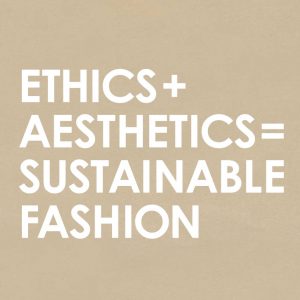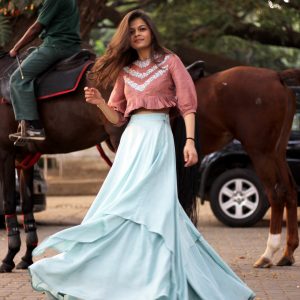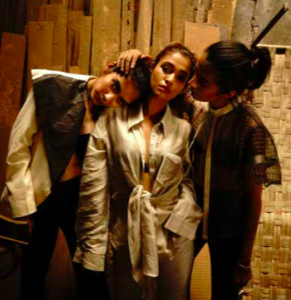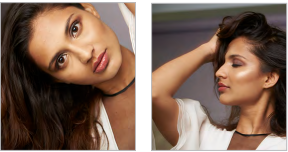The Principles of Fashion Design
When you see models and celebrities wearing incredible creations downs the runway, it looks breath-taking. But, do you know that beauty like this is achieved by following a strict set of principles?
The design language is a complex and logical series of rules. There are principles of fashion design that help designers transform any garment into a masterpiece. These principles of fashion design are responsible for giving structure to fashion designers to create beautiful spaces.
Whether it’s a dress, a skirt, trousers, tops, suits, or combinations, a fashion designer must use these principles to craft stylish and functional clothing. What are these elements and principles of design in clothing? Let’s explore them in this article.
The Principles of Fashion Design
1. Rhythm
In fashion design, rhythm refers to the repetition of visual patterns. It’s a continuity of organized movement and is also called recurrence. There are four elements to this, which are used to create a sense of excitement and activeness in the design. These draw the eye from one element to another.
Repetition means using the same element more than once throughout a design. It’s an excellent way to lead the eye across a design. A color, pattern, line, texture, or any other element is repeated several times throughout a design. Combinations of these can be used repetitively to create visual rhythm.
Progression is when the designer takes an element and applies a gradient to one or more of its qualities, they’ve created progression. One can increase or decrease the size of elements such as shape, line, or color. This creates visual interest as, without variation, repetition can look monotonous.
Transition refers to a visual detail that subtly and smoothly moves the eye from one area to another. A designer can use a curved line, to achieve this visual effect. This is another example of repetition with variation.
Another variation is contrast, where you put two opposite elements next to each other. Examples are placing black and white patterns on a dress, or using circles and squares together in a pattern. This principle can be jarring if applied poorly and lively if executed well. It must be applied subtly to avoid being overpowering.
2. Emphasis (Focal Point or Center of Attraction)
This essential element of design in fashion draws attention to a specific part of the body or garment. This is done in various ways, such as using different sizes, colors, textures, shapes, etc. These include embellishments, like sequins, cut-outs, peplum skirts, ruffled sleeves, and more. What this does is draw visual interest to a particular area, therefore decreasing attention on the other areas. If one desires to accentuate their shoulders, they can opt for a halter neck dress or top. Flared and ruffled skirt details help take away attention from the upper body. A popular example is the leg-o-mutton sleeves that adorned 1980’s wedding gowns.
Emphasis is also created using:
- Value (light and dark of the same color).
- Complementary colors and atmospheric perspective.
3. Balance
In fashion, this is essentially the equal distribution of visual weight. Designers use this principle when creating necklines, hemlines, seams, and more. These relate to our physical concept of internal equilibrium. If this principle isn’t utilized effectively, the viewer feels uncomfortable and the design appears visually unstable. Therefore, it’s important to create overall stability by effectively arranging the details and parts of a dress with this principle in mind. Symmetrical and asymmetrical are two main types of balance.
Asymmetrical, or informal balance, is when the designer makes an object look unequal by using it in a specific way in the repetition of an arrangement of design elements. Asymmetrical balance is tough to execute effectively. For example, a one-shoulder gown can look interested. But, would a jacket with one lapel larger than the other look as good? The answer is no.
Symmetrical, or formal balance, is created when certain elements of an object are repeated equally in an arrangement of design elements. This is done in such a way that they appear to be equal. For example, a straight hemline is symmetrically balanced as it looks equal in every direction.
4. Proportion
The principle of proportion refers to the ratio of one element to the other in a design. It helps designers choose the size and shape of many elements concerning each other to create a pleasant overall effect. A feeling of togetherness is created when different parts (amounts, sizes, or numbers) relate to each other.
When one draws a car – they have to create the tires in proportion to the rest of the vehicle’s body. This creates a comparatively harmonious relationship between the sizes of tires and the car’s body.
Similarly, when two or several elements (such as colors, quantity, and size) are created in proportion, it looks good. If this principle isn’t utilized, the final design can look strange and ‘out of proportion’.
This principle is based on a rule called the ‘Golden Mean’ or ‘Golden Ratio’. This was developed by Greek mathematicians and plays a central role in many disciplines related to design.
5. Unity (Harmony)
When the fashion designer weaves all the elements in such a way that they come together to create a unified design language, they’re using the principle of unity. This is also known as harmony. When this is effectively executed, a garment looks good overall.
Each design element enhances the others, as opposed to distracting the eye from the design. This principle ensures that the design doesn’t look chaotic or lifeless. The main goal of each design is to achieve the maximum amount of unity between the elements as possible.
If you’re interested in learning these principles of design in fashion, study from the best institute for fashion designing in Mumbai. ISDI – School of Design and Innovation, Mumbai offers a 4 year UG Program in Fashion Design. They have received curriculum development support from the prestigious Parsons School of Design, New York, and prepares students for careers in fashion.
This course allows students to become creative directors, accessory designers, costume designers, material researchers, embroidery and surface designers, and fashion illustrators. Other roles include marketing, styling, merchandising, content development, curatorial work, and fashion research and writing!
Come and begin a colorful, exciting journey into the mesmerizing world of fashion at one of the best fashion designing schools in Mumbai!










